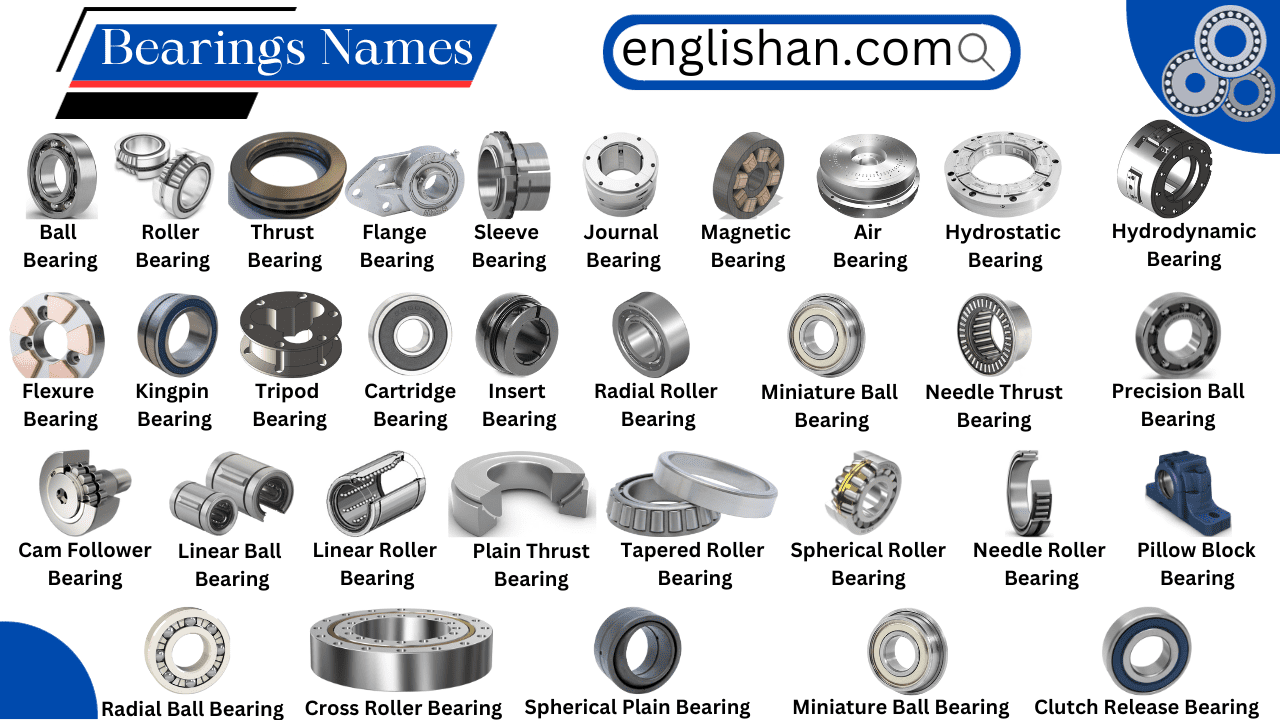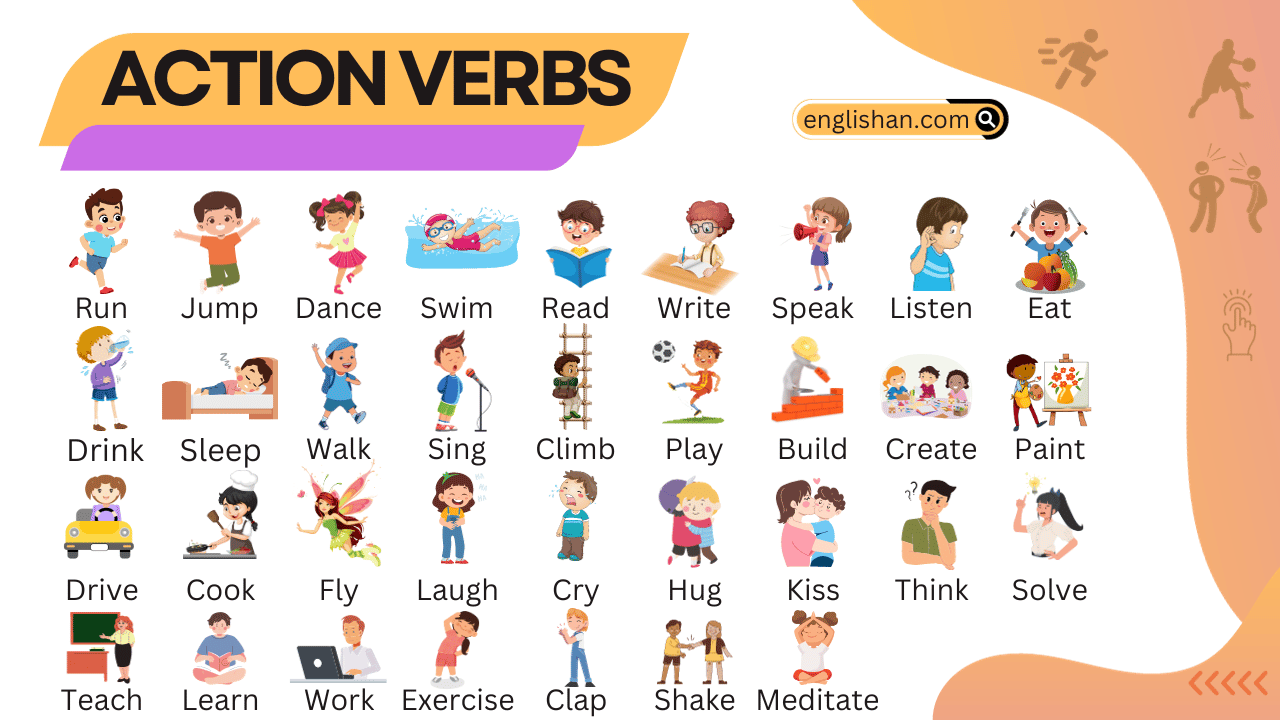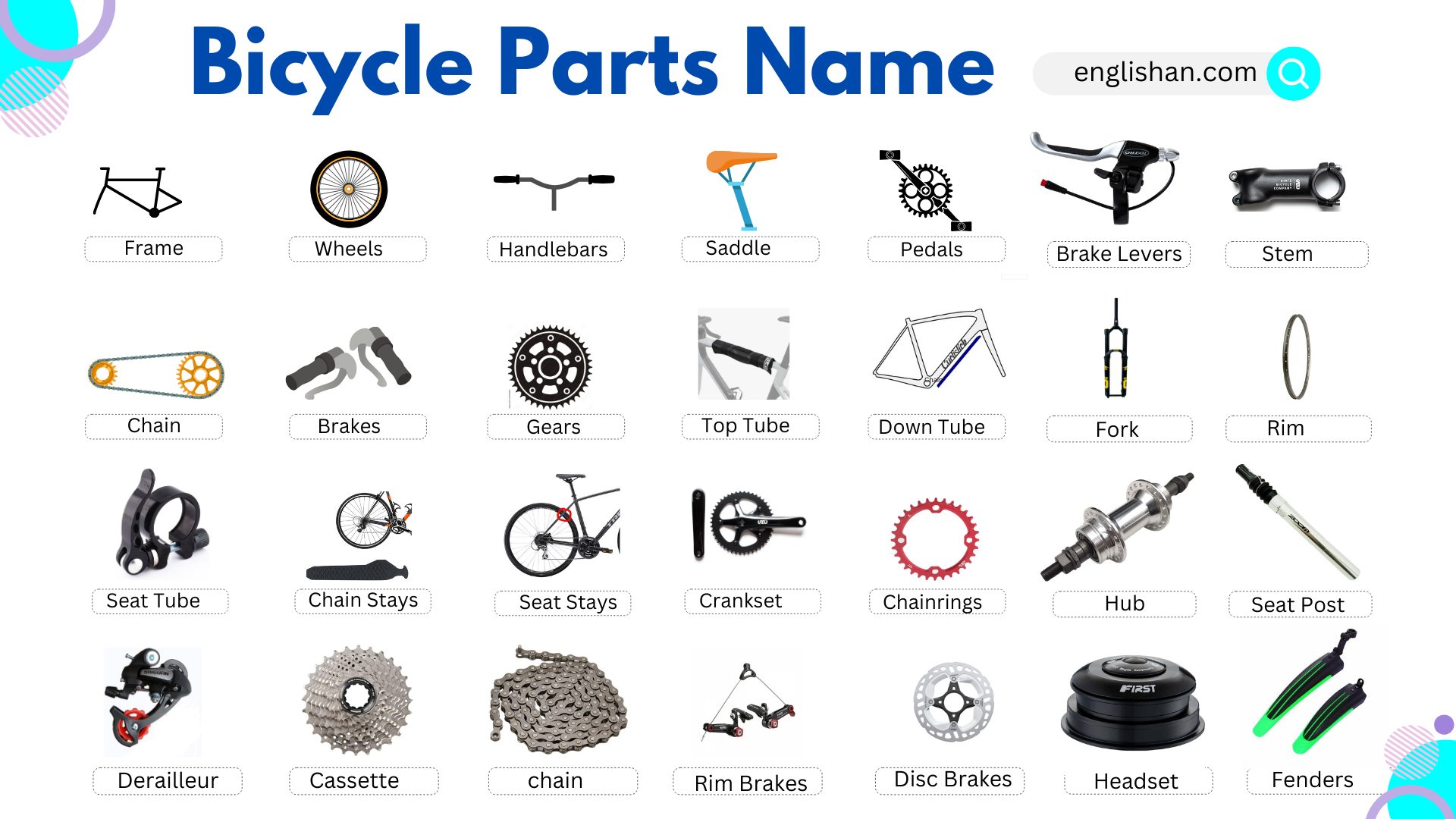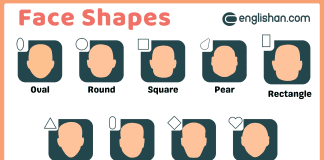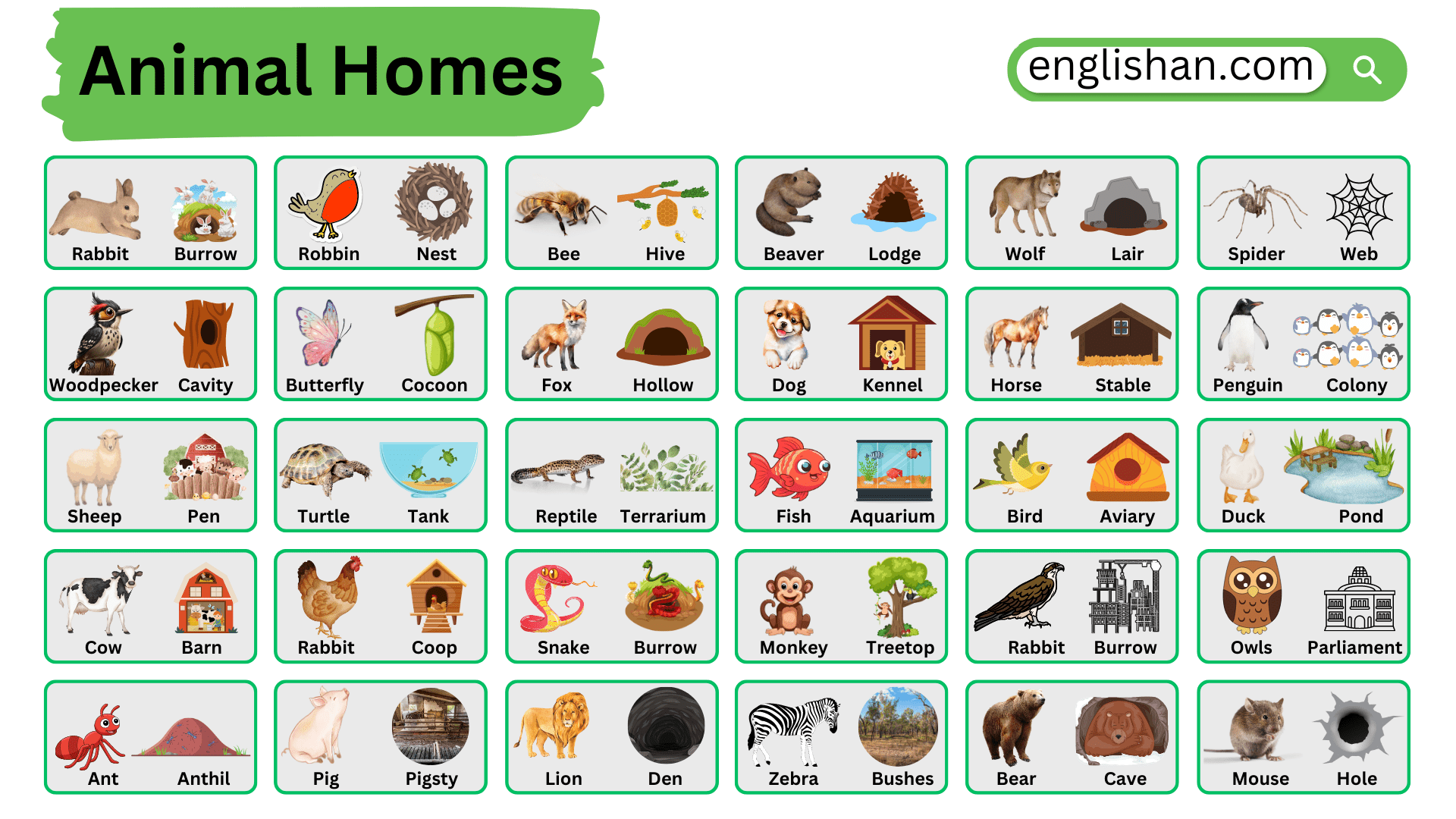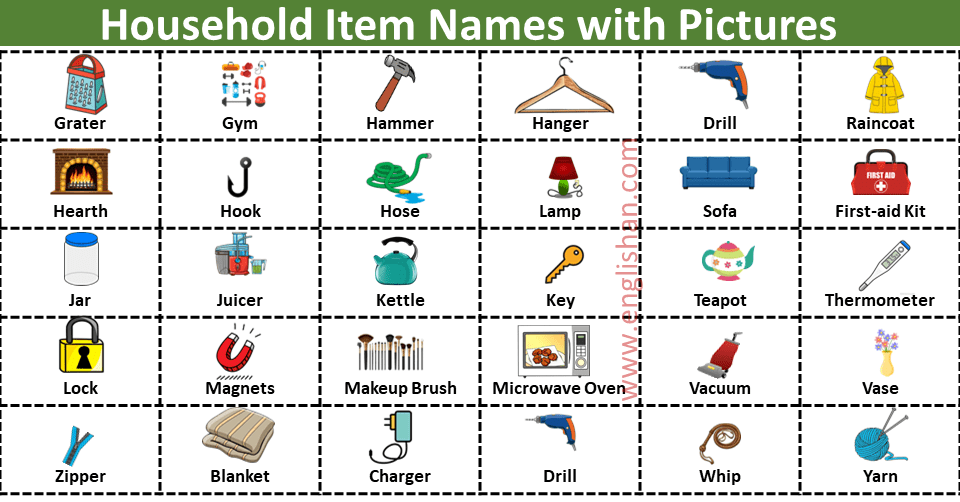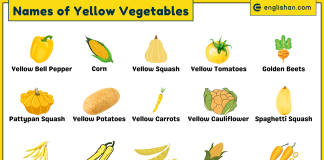Contents
In this blog post, you will learn the different bearings names in English with pictures. Bearings are important mechanical parts used in machines, vehicles, and tools. Understanding their names helps in technical communication and improves your vocabulary. Each type of bearing has a specific function, and knowing their names can be useful in many fields, including engineering and mechanics.
To learn more vocabulary on different topics, visit our vocabulary category.
List of Bearings Names with Pictures
Linear Plain Bearings
These bearings provide smooth, precise motion along a single axis, ideal for linear movements in machinery with minimal noise and maintenance requirements.
Flange Bearings
Mounted in a flange, these bearings secure shafts within housings, providing stability and support for various mechanical applications, with a focus on handling radial loads efficiently.
Linear Sliding Bearings
Designed to allow for free motion in one dimension, these bearings are used in equipment requiring high precision under low load conditions, like medical or office machinery.
Plummer Block Bearings
These are pedestal-mounted bearings designed to provide support for a rotating shaft with the mounting surface on a parallel line with the axis of the shaft, enhancing load management.
Insert Bearings
Insert bearings come with a spherical outer surface and are pre-assembled into a compatible housing, simplifying installation processes across various applications.
Thin Section Bearings
With a small cross-section compared to standard bearings names, these are perfect for compact spaces, offering reduced weight without sacrificing performance. This design is ideal where space and weight are at a premium but robust functionality is still required.
Miniature Bearings
Ideal for small applications such as medical devices or small motors, these bearings handle light loads and operate quietly, which is critical in sensitive environments.
Pedestal Bearings
Mounted on pedestals, these bearings offer stability and support under heavy loads, commonly used in conveyor belt systems and large-scale industrial applications.
Precision Bearings
Designed for high accuracy and speed, precision bearings are crucial in applications where low noise and minimal vibration are essential, like in aerospace and robotics.
Radial Bearings
These bearings are designed to take loads perpendicular to the axis of rotation, commonly used in wheels where radial loads are predominant.
Hybrid Bearings
Combining ceramic and steel materials, hybrid bearings are designed for environments requiring high speed and durability, reducing wear under extreme conditions.
Thermoplastic Bearings
Made from thermoplastic, these bearings resist corrosion and wear, suitable for wet environments and various temperature ranges, while operating quietly.
Sensor Bearings
Equipped with sensors, these bearings monitor their own performance and health, critical in automated applications where maintenance prediction is needed.
High-Temperature Bearings
These bearings can operate under extreme temperatures without losing performance, ideal for applications in metallurgy and processing industries.
Magnetic Bearings
Using magnetic fields to maintain position and rotation, these bearings eliminate direct contact to reduce wear, maintenance, and increase load capacity.
Fluid Bearings
They support loads using a thin layer of liquid or gas, ideal for high-speed applications where minimizing friction and wear is crucial.
Flexure Bearings
Incorporating flexible elements, these bearings handle angular movement and offer very low resistance, suitable for precision instruments.
Jewel Bearings
Typically used in precision devices like watches, these bearings are small and use hard gems to reduce friction and prolong the device’s lifespan.
Hydrodynamic Bearings
They use a film of lubricant that forms during motion to support the bearing’s loads, ideal for high-load, high-speed applications such as turbines.
Application-specific Bearings
These are custom-designed for specific applications, ensuring optimal performance in unique environments, tailored to meet specific load and rotation requirements.
Linear Roller Bearings
These bearings offer higher load capacities and more precision than plain bearings, suited for linear motion in industrial machines and conveyance systems.
Mast Guide Bearings
Specifically designed for fork lift masts, these bearings handle both axial and radial loads, critical for vertical and horizontal guidance.
Axle Bearings
Essential for vehicle performance, these bearings are tailored to withstand both radial and thrust loads, ensuring stability and efficiency.
Kingpin Bearings
Used in the steering pivot, known as the kingpin, of vehicles, these bearings are crucial for smooth turning and handling.
Names of Bearings Image 1
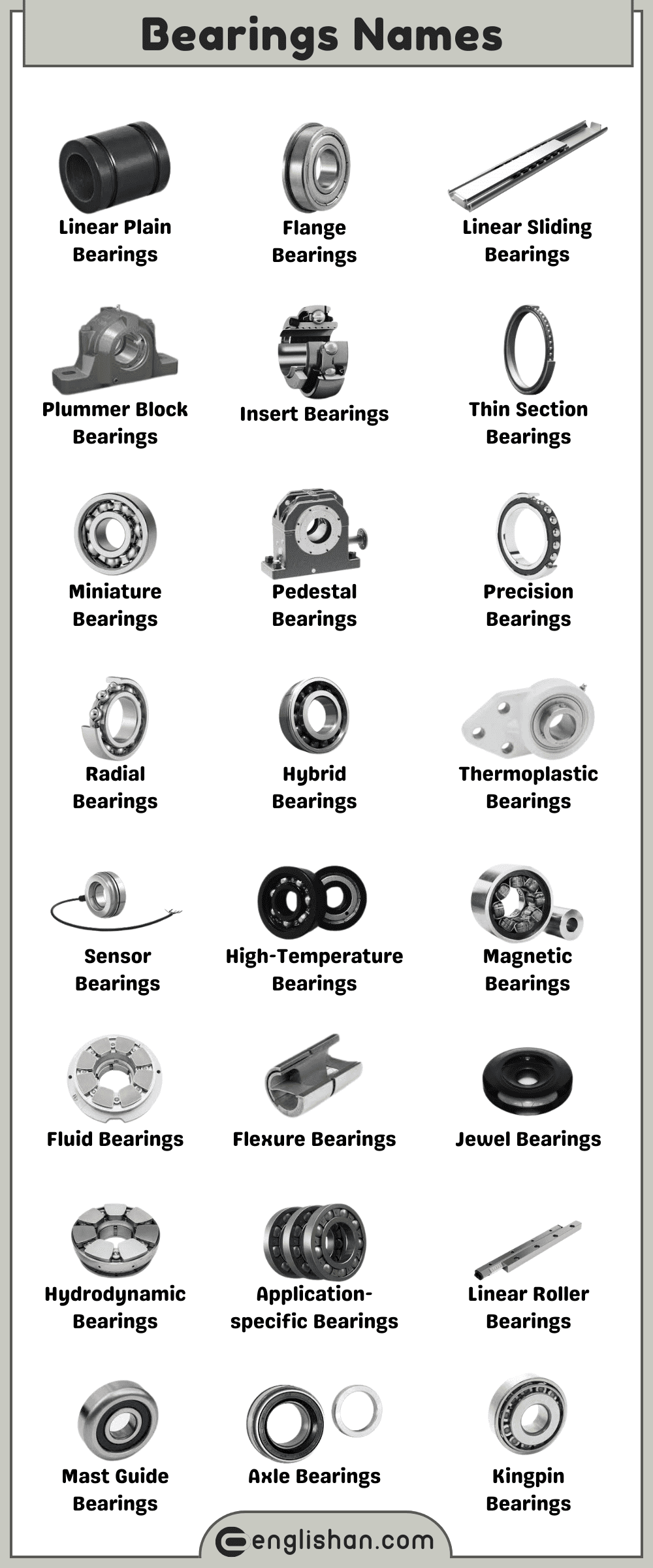
Integral Shaft Bearings
These bearings are built directly onto the shaft, enhancing stability and load capacity, ideal for applications in electric motors and pumps.
Clutch Release Bearings
Key to smooth clutch operation, these bearings reduce noise and vibration between the clutch and gearbox, ensuring seamless gear shifts.
Water Pump Bearings
Designed to handle high-speed rotations and resist water exposure, these bearings are crucial for maintaining a car’s engine cooling system.
Track Roller Bearings
Robust bearings that guide and support mobile tracks, suitable for heavy-load machines like excavators and cranes.
Yoke Type Track Rollers
These are mounted on yokes and provide precise control in cam drives, conveyors, and linear motion systems.
Screw Drive Bearings
Specially designed to handle the loads in ball screws, these bearings are vital for precision in CNC machines and robotics.
Cam Followers
These bearings are designed to follow cams or tracks, providing reliable and maintenance-free operation in automated machinery.
Main Bearings
Situated in the engine block, main bearings support the crankshaft, allowing it to spin freely under heavy loads.
Bicycle Bearings
Found in the wheel hubs and bottom brackets, these bearings ensure smooth cycling and are built to resist dirt and moisture.
Fishing Reel Bearings
These enhance reel performance, making them smoother and more responsive, essential for both amateur and professional fishing gear. Choosing the right bearings names ensures peak performance.
Automotive Bearings
Used throughout vehicles, these bearings are tailored to reduce noise and vibration, enhancing the vehicle’s overall performance.
Self-aligning Bearings
Designed to correct misalignments, these bearings are used in shafts that may bend under heavy loads, like in conveyors.
Double Row Bearings
These offer greater load capacity and stability, perfect for handling radial and axial loads in both directions.
Withdrawal Sleeves
These components allow bearings to be mounted on smooth shafts, facilitating easier removal and repositioning of bearings.
Freewheel Bearings
Allow wheels or other components to rotate freely in one direction, crucial for bicycle and motorcycle performance.
Other Bearings
A category for specialized bearings not listed, designed for unique or rare applications.
Eccentric Bearings
These bearings facilitate simple adjustments in position for applications like conveyor belt tensioners.
Bearing Housings
Protective casings that support bearings, they prevent contaminants from damaging the bearings and help maintain alignment.
Spindle Bearings
Designed for high-speed tools and machines, these bearings ensure accuracy and high performance in spinning applications.
Screw Thread Bearings
These bearings are essential for converting rotational motion to linear motion in machines with threaded shafts.
Small Ball Bearings
Compact bearings that handle moderate loads; ideal for household appliances, skateboards, and hard drives.
Super Precision Bearings
Engineered for superior accuracy and high-speed operation, these are used in machining and aerospace applications.
Turntable Bearings
Facilitate smooth rotation in heavy machinery and are critical in applications ranging from medical equipment to radar platforms.
Impact Bearings
Built to absorb significant impacts, these bearings are used in heavy-duty applications where shocks are frequent.
Bearings Names and Types Image 2

Deep Groove Ball Bearings
These are versatile, handling radial and moderate axial loads, making them suitable for a wide range of applications, including automotive and industrial machinery.
Ball Bearings
Standard ball bearings are designed for handling both radial and light axial loads, used commonly in small motors and household appliances.
Angular Contact Ball Bearings
Optimized to handle higher axial loads, adjusting to the contact angle as the axial force increases, perfect for spindle and precision applications.
Self-aligning Ball Bearings
These bearings compensate for shaft misalignments caused by housing or shaft deflections, ideal for applications prone to alignment errors.
Roller Bearings
Designed to carry heavy load capacities, roller bearings are used in applications like conveyor belt rollers and heavy machinery.
Four-point Contact Ball Bearings
These can support axial loads from both directions in addition to radial loads, suitable for turntables and heavy load applications.
Needle Roller Bearings
Featuring small cylindrical rollers, these bearings provide a high load capacity in a compact design, commonly used in automotive components. It’s important to reference accurate bearings names for proper selection.
Tapered Roller Bearings
Ideal for handling large radial and axial loads in one direction, these are used in car hubs, gearboxes, and other heavy machinery.
Spherical Roller Bearings
Perfect for applications with heavy radial and axial loads in both directions, they can also handle misalignment issues.
Barrel Roller Bearings
These bearings are robust, designed to handle very high radial loads and moderate axial loads, used in heavy-duty machinery.
Toroidal Bearings
Combining the capacity to handle radial and axial loads with the ability to self-align, toroidal bearings are used in metalworking and other heavy industries.
Crossed Roller Bearings
With alternating rollers for higher precision, these bearings offer greater rigidity and handle radial, axial, and moment loads in compact areas.
Flanged Bearings
Incorporating flanges on the outer ring, these bearings simplify the assembly process, often found in electronics and smaller machinery.
Spherical Plain Bearings
These bearings accommodate wide-ranging angular movements and are typically used in applications requiring high misalignment capacity, like articulating joints.
Rod End Bearings
Often found in steering links and control rods, they allow for misalignment and pivoting in the assembly.
Pivot Bearings
Specifically designed to allow rotation in limited arcs or pivoting applications, such as in swivel chairs and rotating displays.
Thrust Bearings
Specialized for axial loads, thrust bearings are used in automotive transmissions and helicopter rotor heads.
Linear Bearings
Designed to allow free motion in one direction, these are used in various linear moving guides like drawers and industrial machinery.
Thrust Roller Bearings
Capable of handling high axial loads, these bearings are used in heavy-duty applications such as gear sets and car transmissions.
Linear Ball Bearings
Offer smooth linear movement and are typically used in stages and linear guides for precision positioning in machinery.
Linear Roller Bearings
These provide a linear motion with low friction, used for heavy-load applications in various industrial machinery.
Split Bearings
Designed for hard-to-reach places where maintenance is difficult, these bearings can be split for easier placement and replacement.
Plain Bearings
Simplest type of bearing, with no rolling elements and used for sliding motion between surfaces, such as in drawer runners or vehicle suspensions.
Sleeve Bearings
Also known as bushings, these are used to reduce friction between rotating shafts and stationary supports, commonly used in engines and compressors.
Bearings Names Image 3
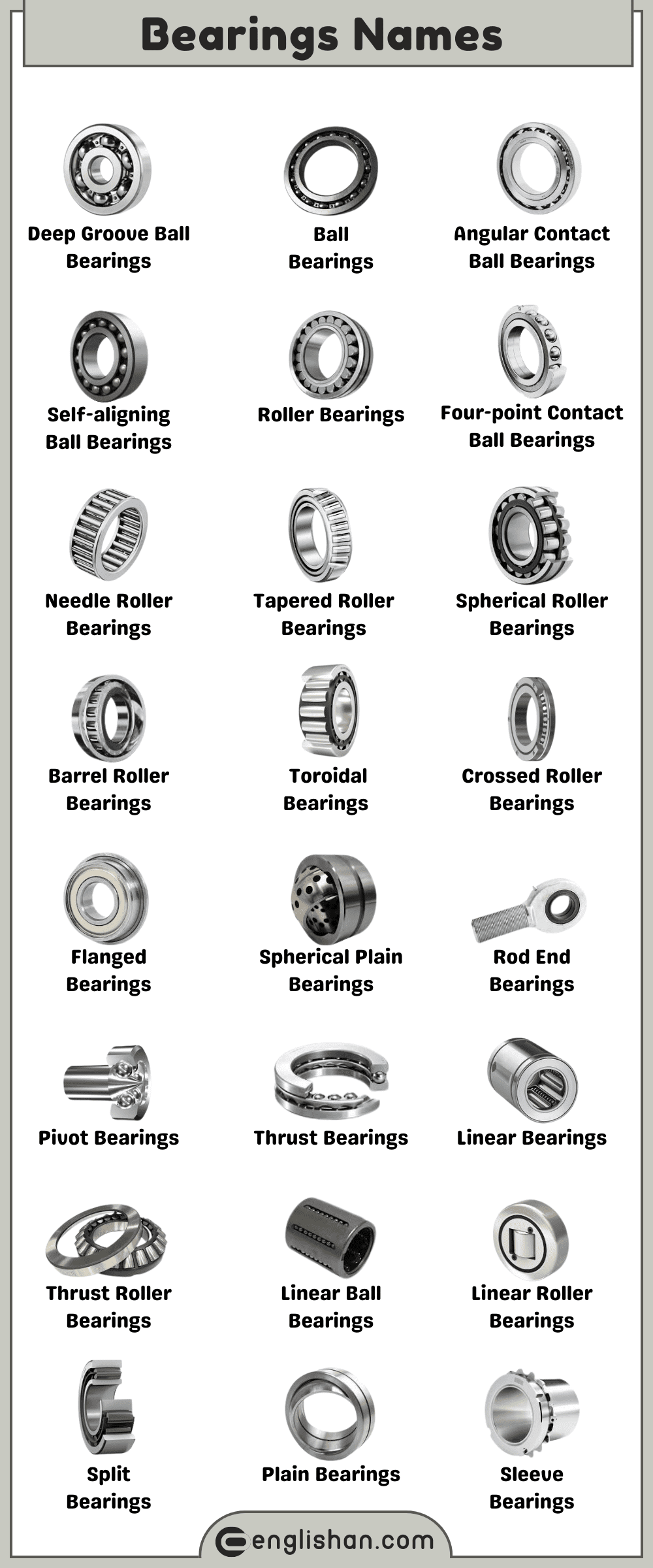
List of Bearings Names
- Linear Plain Bearings
- Flange Bearings
- Linear Sliding Bearings
- Plummer Block Bearings
- Insert Bearings
- Thin Section Bearings
- Miniature Bearings
- Pedestal Bearings
- Precision Bearings
- Radial Bearings
- Hybrid Bearings
- Thermoplastic Bearings
- Sensor Bearings
- High-Temperature Bearings
- Magnetic Bearings
- Fluid Bearings
- Flexure Bearings
- Jewel Bearings
- Hydrodynamic Bearings
- Application-specific Bearings
- Linear Roller Bearings
- Mast Guide Bearings
- Axle Bearings
- Kingpin Bearings
- Integral Shaft Bearings
- Clutch Release Bearings
- Water Pump Bearings
- Track Roller Bearings
- Yoke Type Track Rollers
- Screw Drive Bearings
- Cam Followers
- Main Bearings
- Bicycle Bearings
- Fishing Reel Bearings
- Automotive Bearings
- Self-aligning Bearings
- Double Row Bearings
- Withdrawal Sleeves
- Freewheel Bearings
- Other Bearings
- Eccentric Bearings
- Bearing Housings
- Spindle Bearings
- Screw Thread Bearings
- Small Ball Bearings
- Super Precision Bearings
- Turntable Bearings
- Impact Bearings
- Deep Groove Ball Bearings
- Ball Bearings
- Angular Contact Ball Bearings
- Self-aligning Ball Bearings
- Roller Bearings
- Four-point Contact Ball Bearings
- Needle Roller Bearings
- Tapered Roller Bearings
- Spherical Roller Bearings
- Barrel Roller Bearings
- Toroidal Bearings
- Crossed Roller Bearings
- Flanged Bearings
- Spherical Plain Bearings
- Rod End Bearings
- Pivot Bearings
- Thrust Bearings
- Linear Bearings
- Thrust Roller Bearings
- Linear Ball Bearings
- Linear Roller Bearings
- Split Bearings
- Plain Bearings
- Sleeve Bearings
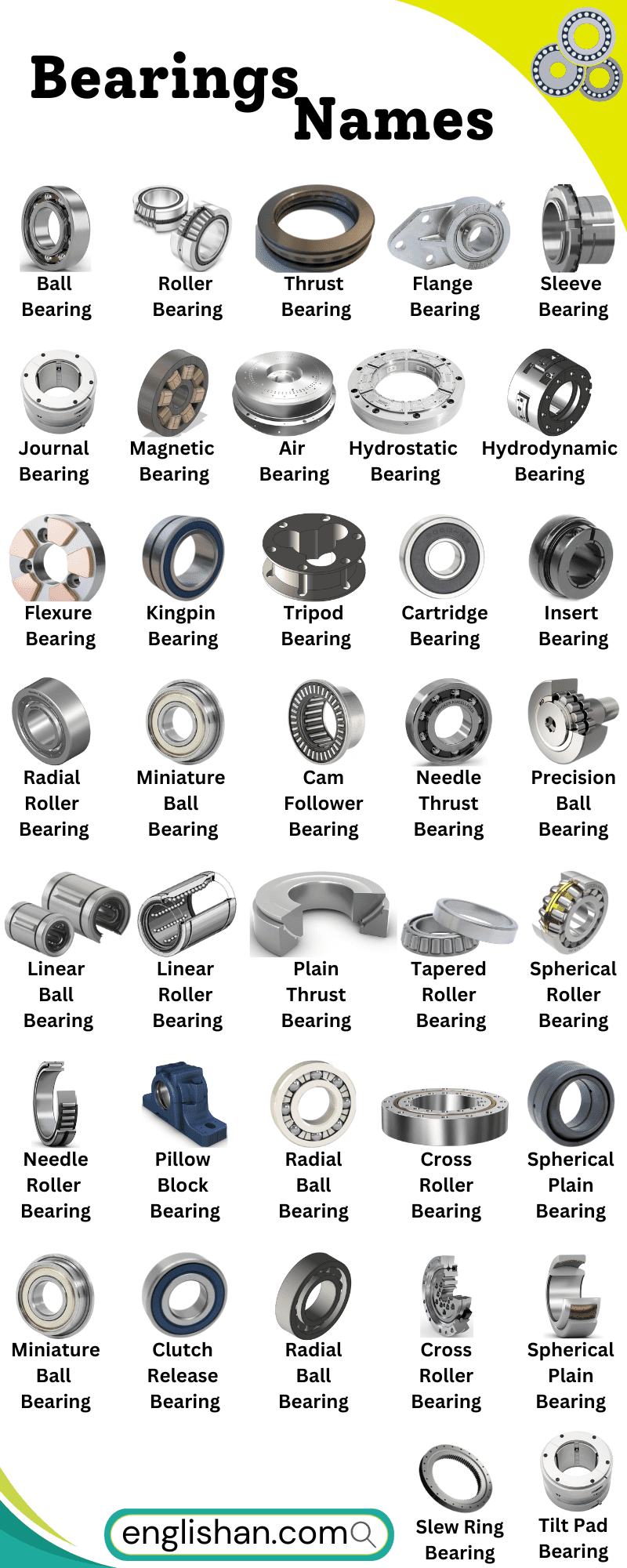
FAQs:
Here are some types of bearings:
1. Ball Bearings – Use small balls to reduce friction.
2. Roller Bearings – Use rollers to support heavy loads.
3. Needle Bearings – Use long, thin rollers.
4. Tapered Bearings – Use tapered rollers for both types of loads.
5. Thrust Bearings – Handle pressure from one direction.
6. Magnetic Bearings – Use magnets to reduce friction.
These bearings help machines move parts smoothly!
Here are 12 top bearing brands known for quality and reliability:
1. SKF
2. NSK
3. FAG
4. Timken
5. NTN
6. Koyo
7. INA
8. Schaeffler
9. ZKL
10. RBC Bearings
11. Nachi
12. JTEKT
These brands are widely used in industries for producing high-performance bearings.
Bearings are named by:
1. Type: The first number shows what type it is (like ball bearings).
2. Size: The next numbers show the size (bigger numbers = bigger bearings).
3. Features: Extra letters show special features (like seals).
Example: 6205-2RS means a ball bearing, medium size, with rubber seals.
A 6203 bearing is a small ball bearing.
1. 6 means it’s a ball bearing.
2. 203 shows the size: 17 mm inside, 40 mm outside, and 12 mm wide.
It’s used to reduce friction in machines.
Read More
